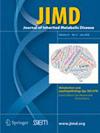Impaired Proteostasis is Linked to Neurological Pathology in a Zebrafish NGLY1 Deficiency Model
Abstract
NGLY1 is a key enzyme in the process of misfolded protein deglycosylation. Bi-allelic pathogenic variants in NGLY1 cause N-glycanase deficiency, also known as congenital disorder of deglycosylation (NGLY1-CDDG). This rare and multisystem autosomal recessive disorder is linked to a variable phenotype of global developmental delay, neuromuscular abnormalities, and alacrima, and it lacks effective treatment. We have studied the possible underlying mechanisms for the neuromuscular and ophthalmic phenotypes in an ngly1-deficient zebrafish model carrying a similar genetic variant that has also been identified in previously reported patients. We investigated phenotypic, biochemical, and molecular details underlying ngly1 deficiency using a zebrafish model. ngly1-deficient zebrafish phenotypes were characterized using histological staining, transmission electron microscopy (TEM), and micro-CT imaging. Furthermore, fish brain molecular and biochemical characterization was performed by gene expression analysis and immunoblotting techniques. Impaired proteostasis was evident in the brain of the mutant zebrafish, including accumulation of poly-ubiquitinated proteins and amyloid fibril aggregation. The mutant fish featured neuromuscular abnormalities and significant aquaporin1-protein reduction in the eyes and brain. The zebrafish model of NGLY1 deficiency provides an ideal platform for studying the molecular and biochemical mechanisms underlying NGLY1-CDDG in humans. Our novel findings of impaired protein homeostasis encompassing amyloid fibril aggregation (folding) and poly-ubiquitinated protein accumulation (degradation) in the brains of mutant zebrafish offer new insights into the brain pathology associated with NGLY1 deficiency. These discoveries may also advance our understanding of other neurodegenerative disorders and facilitate the identification of potential therapeutic targets.


 求助内容:
求助内容: 应助结果提醒方式:
应助结果提醒方式:


